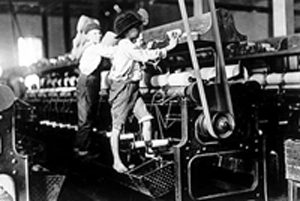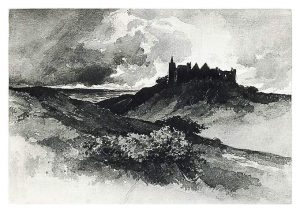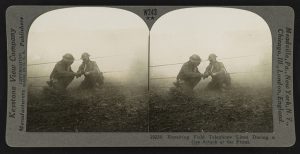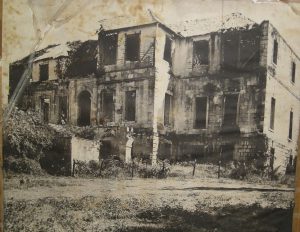Monday, November 5th
Transformation: The Industrial Age
Introduction to the Victorian Period (BABL B 498-539)
William Wordsworth, “Steamboats, Viaducts, and Railways,” 1835 (BABL B: 183)
Thomas Carlyle, from Past and Present: “Midas” and “Captains of Industry, 1843 (BABL B: 546-549, 566-569)
Elizabeth Barrett Browning, “The Cry of the Children,” 1844 (BABL B: 634-636)
Charles Dickens, “A Walk in the Workhouse,” 1850 (BABL B: 751-754)
In-Class Writing:
- What qualities do the three works read for today share? (i.e. rhetoric, imagery, narrative personae, etc.).
- Identify at least 1 direct quote from at least 1 of the works that you felt was most effective in making the author’s point about the the “condition of England”.
Wednesday, November 7th
Tennyson, “Locksley Hall,” 1842 (BABL B: 661-666)
Glossary: Lyric, Dramatic Lyric, Dramatic Monologue
PEER REVIEW DAY: See directions on Second Essay Assignment.
**
Monday, November 12th
Conclude discussion of Victorian Poetry
Webster, “A Castaway,” 1870 (BABL B: 865-874)
Hardy, “The Darkling Thrush,” 1901 (BABL B 892)
Glossary: Lyric, Dramatic Lyric, Dramatic Monologue
Transformation: The World Wars
Introduction to the Early Twentieth Century: From 1900 to Mid-Century (BABL 1039-1068) and Introduction to the Late Twentieth Century and Beyond: From 1945 to the Twenty-First Century (BABL B 1405-1422)
Sassoon, “They,” “Glory of Women,” 1917, and from Memoirs of an Infantry Officer, comp. 1916; pub. 1930 (BABL B: 1139; 1140-41)
Owen, “Dulce et Decorum Est” and “Futility,” 1920 (BABL B: 1147)
Wednesday, November 14th
Eliot, “The Love Song of J. Alfred Prufrock,” 1920 (BABL B: 1310-1316)
Smith, “The New Age,” 1957 (BABL B: 1372)
Larkin, “Church Going,” 1954 and “Annus Mirabilis,” 1967 (BABL B 1429-1430, 1431)
Saturday, November 17th: Second Essay Due
**
Monday, November 19th / Thanksgiving Break
Wednesday, November 21st / Thanksgiving Break
**
Transformation: Post-Colonial Diaspora
Contexts: Britain, Empire, and a Wider World (BABL B: 995)
Kipling, “The Widow at Windsor,” 1890 (BABL B: 987)
Henry Lawson, “The Drover’s Wife,” 1892 (BABL B: 1034-1038)
Walcott, “Ruins of a Great House.” Comp. 1953-1955. The links on the pdf are not working but this page does have active links. Many of them require you to be logged into the library page, however: “Ruins of a Great House“
Rhys, “Let Them Call it Jazz,” 1962 (BABL B: 1345-1353)
In-class discussion: In the spirit of Donne’s Meditation XVII, as well as Walcott’s “Ruins of a Great House,” what connections can you make between the disparate works that we’ve read since November 12th?
(See list with publication dates).
Keep in mind that this list includes works we’ll be reading over the next two classes. For Wednesday: please re-read the material we did not discuss on Monday
Glossary: Short Story
It’s time to evaluate English 2320! 1 course evaluation = 1 donut
Wednesday, November 28th
Bennett, “Colonization in Reverse,” 1966 (BABL B: 1583)
Kay, “In My Country,” 1991 (BABL B: 1607)
Alvi, “And If,” 1996 (BABL B: 1600-1601)
Glossary: Postcolonial Studies
See information on our in-class discussion above
In-class extra credit: You will be given the opportunity to earn extra credit by discussing the significance of both wordplay and allusion in Walcott’s “Ruins of a Great House.” Come in prepared to write about the significance of both 1. Wordplay (when a word is used in such a way as to take advantage of its multiple meanings) and 2. Allusion (what does alluding to “Faultkner’s south,” for example, add to the poem and your interpretation of it?)
It’s time to evaluate English 2320! 1 course evaluation = 1 donut
**
Monday, December 3rd / Last Day of Class
Rushdie, “Is Nothing Sacred?,” 1990 (BABL B: 1536-1543)
Malik, “Multiculturalism and the Road to Terror,” 2006 (BABL B: 1604-1607)
DONUT DAY! 1 course evaluation = 1 donut
Tuesday, December 4th
Extra Credit Opportunity: Dr. Jonathan Sachs will be speaking on “Seven Propositions on Slow Time” at 4:30pm in Park Hall 265. You are also invited to the reception afterwards.
You may receive up to 2 extra point on your final exam by attending this talk. Please pay close and respectful attention during the presentation. After the talk, submit a 2-paragraph response. Your response should go beyond mere summary, making connections to literature you have studied or read, ideally in this class, but everything you’ve read is fair game.
Link to department website:
**
Friday, December 7th / Final Exam 8:00am-11:00am (Description)
Extra Credit Opportunity: Visit and respond to “WE: American Thanksgiving Conflict and Communion,” a special exhibit at the Special Collections Library. The exhibit runs through December 22nd and is available to visit Monday through Friday from 8:00 A.M. to 5:00 P.M. and Saturday from 1:00 P.M. to 5:00 P.M.
After briefly describing the exhibit itself, which tells a story of America through fine arts pottery, reflect on both its relation to the works we’ve been reading this semester. Indeed, the early part of American history is (after all) British, and you’ll find many of the authors we’ve read represented in the exhibit.
Finally, discuss what such a table of “thanksgiving” might look like in regards to British literature. Don’t neglect either conversation or conflict in your response.
You may receive up to 2 points on your final exam for this 2-3 paragraph writing assignment, but I’ll need to receive your written response no later than Monday, December 10th
**
Link to October’s Schedule
Link to Course Homepage




